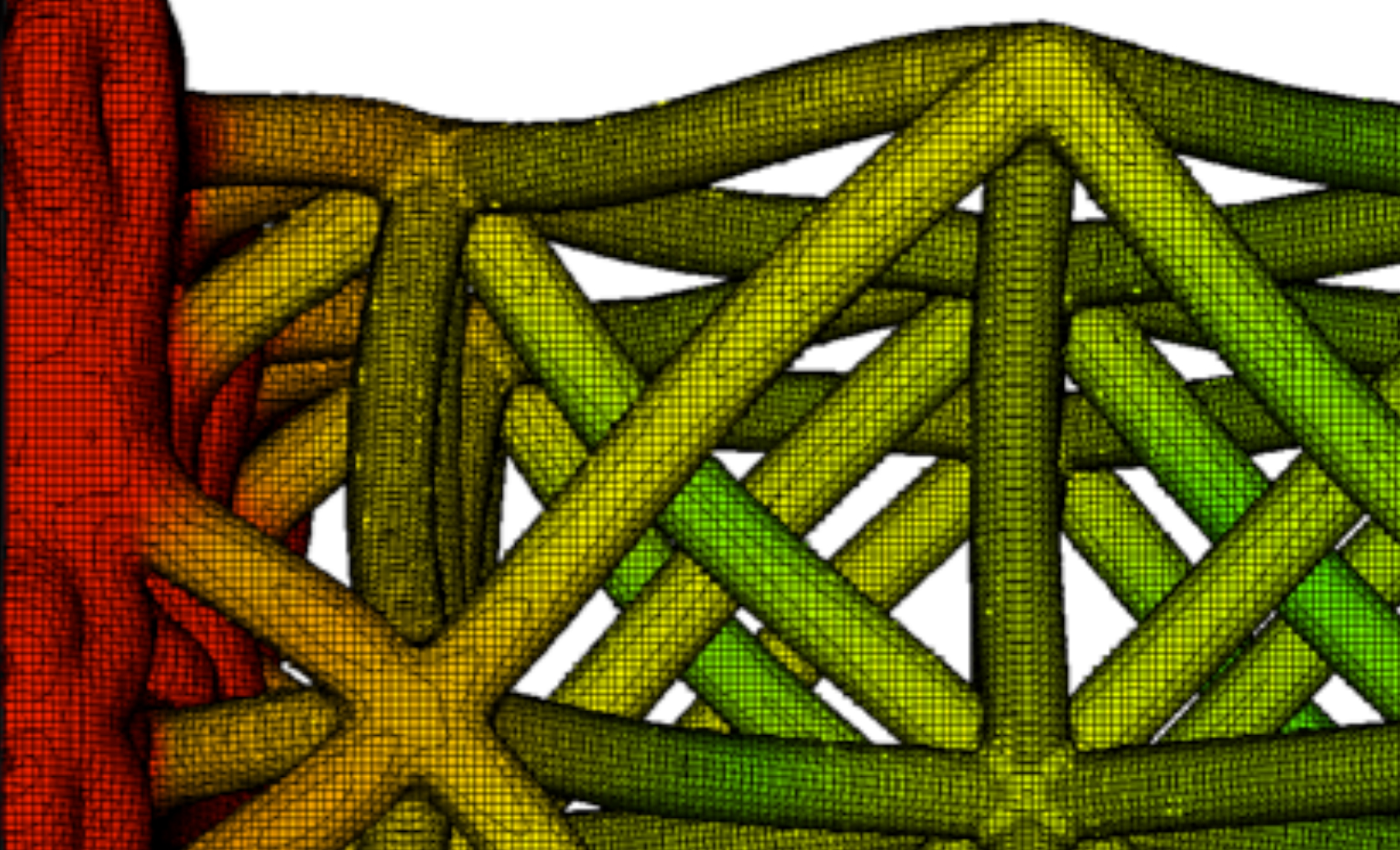The original Lawrence Livermore National Laboratory press release by Anne M. Stark can be read here.
Through a series of dynamic compression experiments on additively manufactured (AM) structured lattices, a Lawrence Livermore National Laboratory (LLNL) team, supported by colleagues at Los Alamos National Laboratory, found that the assemblies have unique properties not exhibited by disordered cellular materials. These experiments were conducted at the new U.S. Department of Energy (DOE) National Nuclear Security Administration-sponsored and Washington State University-operated Dynamic Compression Sector (DCS) at the Advanced Photon Source, a DOE Office of Science user facility at Argonne National Laboratory.
During the experiment, elastic deflection of the structure occurred ahead of the compaction front and in turn the AM lattice materials supported a precursor wave that has not been seen in disordered materials, such as traditional open-cell stochastic foams, which have a comparable density.
This research allows scientists to build accurate models of AM-structured materials under dynamic loading.
The physical world is filled with cellular structures -- both manmade, like truss bridges, and natural origin, like porous bone tissue. These entities demonstrate a material response optimized through topology rather than composition. Cellular materials have received significant attention over the last several decades for their thermal, electrical and optical properties as well as for their potential as lighter-weight replacements for bulk materials.
Conventional materials design relies on manipulation of chemistry or microstructural length scales such as grain size distributions. With the advent of AM—often called three-dimensional (3-D) printing—scientists are able to manipulate the architecture of the cellular material to impart order and periodicity into materials at the mesoscopic scale.
During the recent DCS experiments, the team found that the elastic and compaction behavior exhibits collective response rapidly under impact loading. Time-resolved phase contrast imaging enabled an unprecedented window, in real time, into the propagation of a stress wave in the lattice structures.
"The basic approach is to be able to use the collective properties of an engineered structure at the micron scale to influence the macromechanical response," said LLNL materials scientist Mukul Kumar, the project lead.
The ability to understand and then organize the structure and composition at the mesoscopic scale allows the custom design of materials by applying structural engineering principles, like truss theory, at the micron length scale. This will open up the possibility of designing and engineering material properties to precisely meet the demands of the intended application.
See: J.A. Hawreliak1,2*, J. Lind1, B. Maddox1, M. Barham1, M. Messner1, N. Barton1, B.J. Jensen3, and M. Kumar1, “Dynamic Behavior of Engineered Lattice Materials,” Sci. Rep. 6, 28094 (20 June 2016). DOI: 10.1038/srep28094
Author affiliations: 1Lawrence Livermore National Laboratory, 2Washington State University, 3Los Alamos National Laboratory
Correspondence: *[email protected]
This work was performed under the auspices of the U.S. Department of Energy (DOE) by Lawrence Livermore National Laboratory under Contract DE-AC52-07NA27344 and by Los Alamos National Laboratory (LANL) under contract DE-AC52-06NA25396. This publication is based in part upon work performed at the Dynamic Compression Sector, operated by Washington State University and supported by the U.S. DOE, National Nuclear Security Administration under Award Number DE-NA0002442. This research used resources of the Advanced Photon Source, a U.S. DOE Office of Science User Facility operated for the DOE Office of Science by Argonne National Laboratory under Contract No. DE-AC02-06CH11357.
Argonne National Laboratory is supported by the Office of Science of the U.S. Department of Energy. The Office of Science is the single largest supporter of basic research in the physical sciences in the United States, and is working to address some of the most pressing challenges of our time. For more information, please visit science.energy.gov.

